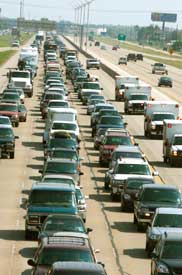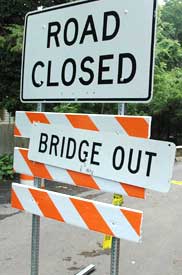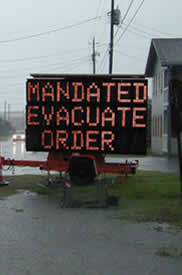Printable Version [PDF, 923 KB]
Contact Information: Operations Feedback at OperationsFeedback@dot.gov.
Evacuation Transportation ManagementTask Five:
|
   |
|
June 26, 2006 Produced in collaboration with the Images courtesy of the Federal Emergency Management Agency (FEMA) |
Technical Report Documentation Page
Table of Contents
1.3 General Timeline of Events
Chapter 2. Phase 1: Advanced Planning
Chapter 3. Phase 2: Incident Notification
Chapter 4. Phase 3: Activation and Mobilization
Chapter 5. Phase 4: Evacuation Operations
Chapter 7. Phase 6: Debrief and Assessment
List of Figures and Tables
Figure 1: Phases of a No-Notice Emergency Evacuation
Table 1: Phase 1 Advanced Planning Roles and Responsibilities
Table 2: Phase 1 Advance Planning Resources and Equipment
Table 3: Phase 2 Incident Notification Roles and Responsibilities
Table 4: Phase 2 Incident Notification Resources and Equipment
Table 5: Phase 3 Activation and Mobilization Roles and Responsibilities
Table 6: Phase 3 Activation and Mobilization Resources and Equipment
Table 7: Phase 4 Evacuation Operations Roles and Responsibilities
Table 8: Phase 4 Evacuation Operations Resources and Equipment
Table 9: Phase 5 Re-Entry Roles and Responsibilities
Table 10: Phase 5 Re-Entry Resources and Equipment
Table 11: Phase 6 Debrief and Assessment
NOTICE
This document is disseminated under the sponsorship of the Department of Transportation in the interest of information exchange. The United States Government assumes no liability for its contents or use thereof. This report does not constitute a standard, specification, or regulation.
The United States Government does not endorse products or manufacturers. Trade and manufacturers’ names appear in this report only because they are considered essential to the object of the document.
![]()
U.S. Department of Transportation
Federal Highway Administration
Office of Operations
1200 New Jersey Avenue, SE
Washington, DC 20590
www.ops.fhwa.dot.gov
June 26, 2006
Publication #FHWA-HOP-08-020
